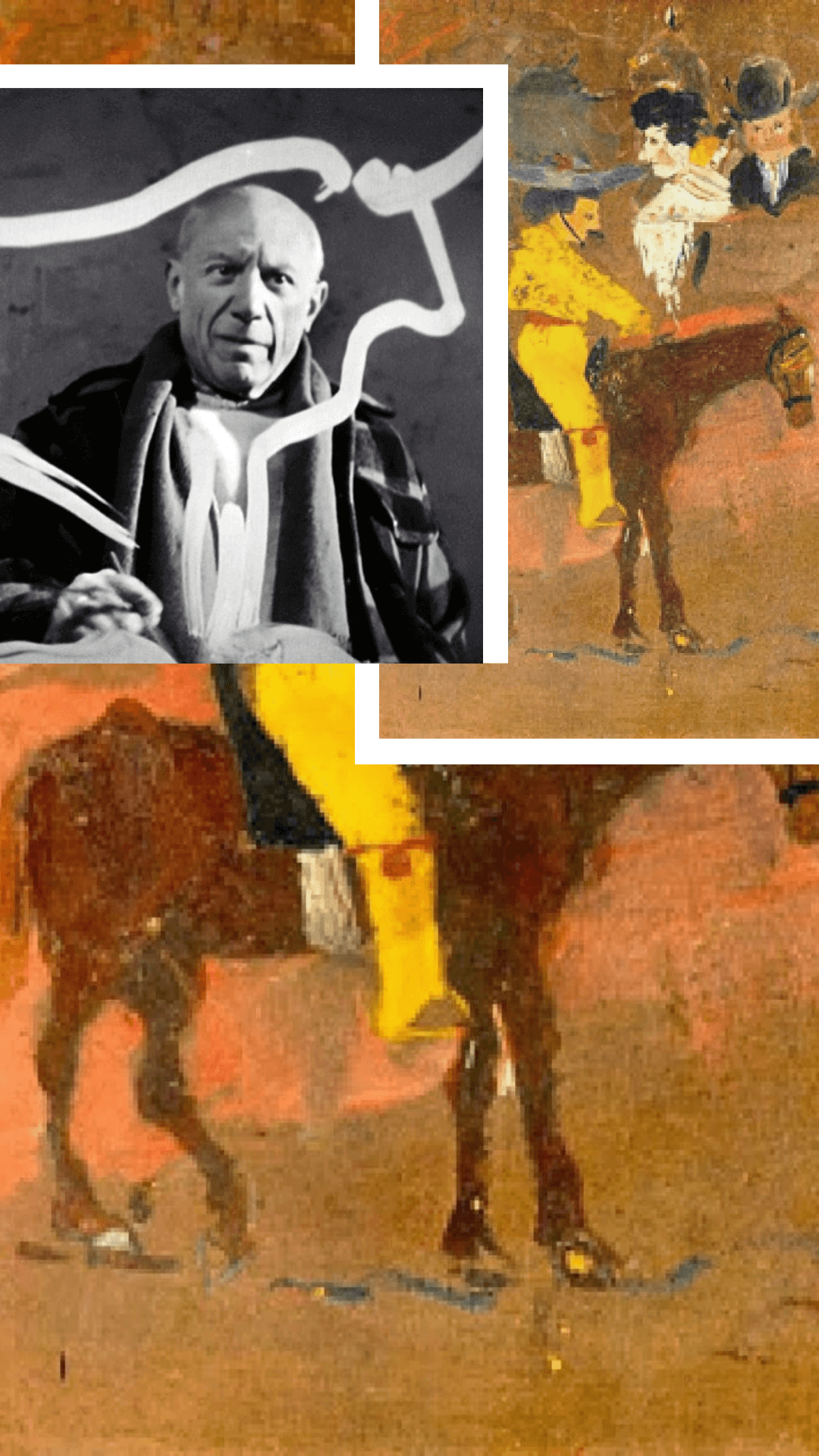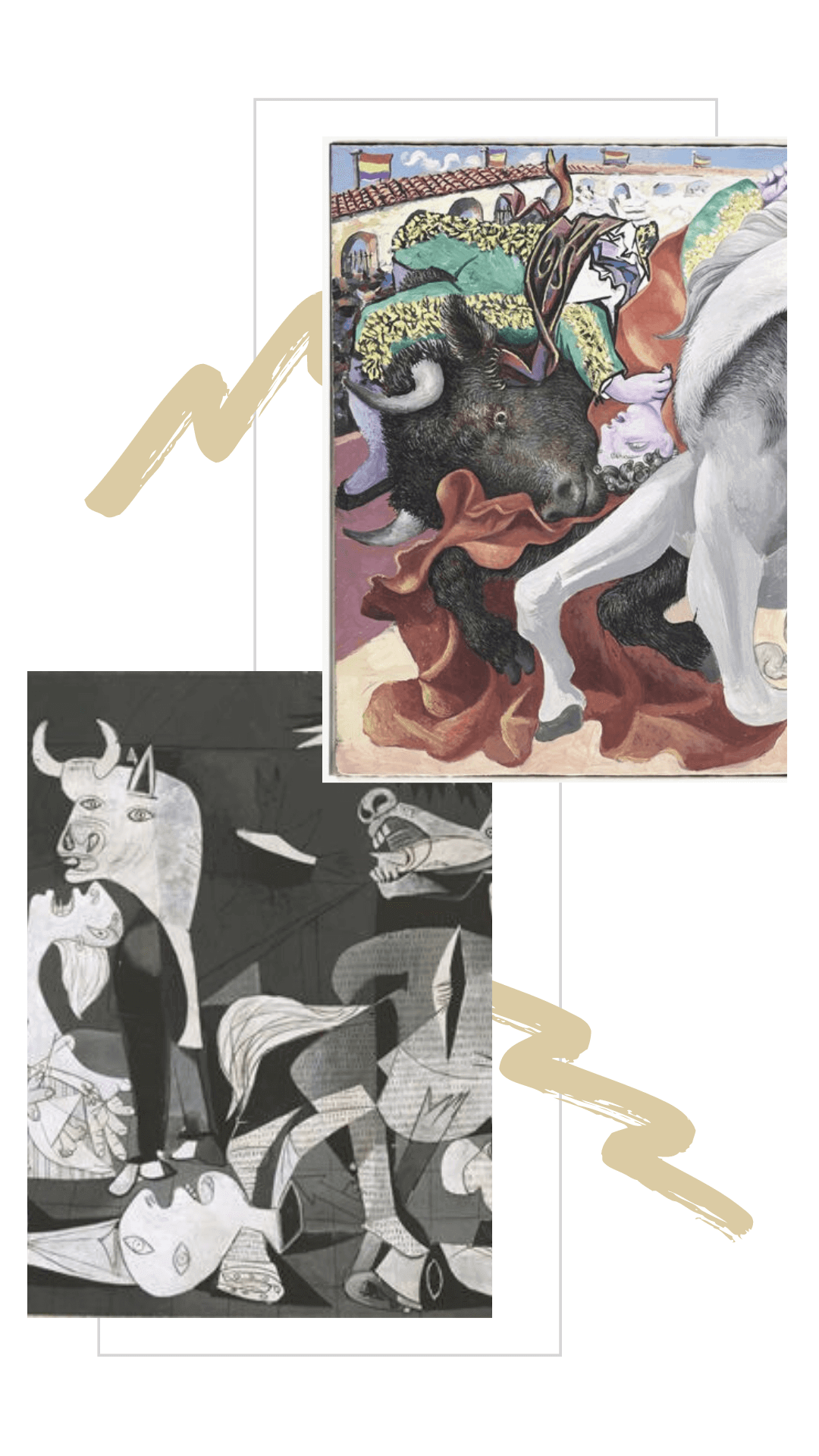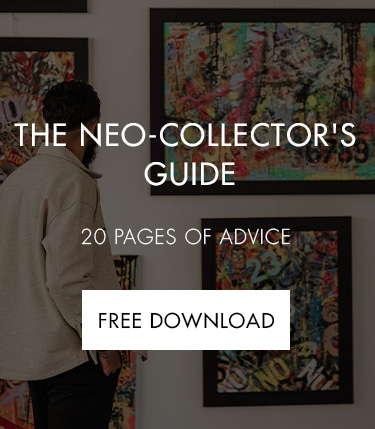The painting "La Mort du torero", of 1933, is the perfect example of the interpretation of bullfighting by Picasso.
One finds there, in a carnal entanglement in the middle of the arena, the body of the horse, its picador, the one of the bull and the prowling death.
What is certain is that the horse is a main figure of the bullfight for Picasso.
Represented as a victim, in front of the primitive force expressed by the bull in this painting, it is found a few years later in the famous "Guernica", where it is eviscerated, twisting its neck in a neighing of pain.
The arenas of bullfighting are ingeniously represented in the decoration of the ceramics that the artist created in Vallauris, in the high country of Nice.
The elliptical shape of the plate coincides perfectly with the one of the arena which represents it.
The picador is a central element of the fight, which he magnifies in a superb series of drawings in ink in 1959.
But the figure of the bullfight that haunts and truly lives Picasso's work is undoubtedly the bull.
So much so the artist often makes it a full subject in many of his works, such as canvases, engravings and other ceramics.
The horned animal took a considerable importance in the 1930s when Picasso brought out the frightening figure of the Minotaur.
In his eyes, this straight creature disembarked from Greek mythology, half-man, half-bull, is the perfect incarnation of the bestial and human duality that he carries within him.
From the bull that fascinated his childish eyes, he makes the Minotaur a pictorial and imaginary double, a being governed by his sexual urges that express themselves brutally.
The animal becomes the central figure of drawings and engravings, "Le Minotaure et la jeune fille" (1934-1936) is the perfect example and a part of a series of works commonly gathered on the title of Minotauria.










.png)







